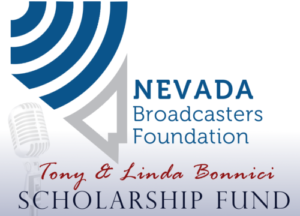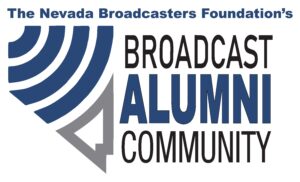
It’s a new year, and it’s time to look ahead at what Washington may have in store for broadcasters this year. The FCC may be slow to tackle some of the big issues on its agenda (like the completion of 2018 Quadrennial Review or any other significant partisan issue) as it still has only four Commissioners – two Democrats and two Republicans. On controversial issues like changes to the ownership rules, there tends to be a partisan divide. As the nomination of Gigi Sohn expired at the end of the last Congress in December, the Biden administration was faced with the question of whether to renominate her and hope that the confirmation process moves more quickly this time, or to come up with a new nominee whose credentials will be reviewed by the Senate. It was announced this week that the administration has decided to renominate her, meaning that her confirmation process will begin anew. How long that process takes and when the fifth commissioner is seated may well set the tone for what actions the FCC takes in broadcast regulation this year.
Perhaps the most significant issue at the FCC facing broadcasters is the resolution of the 2018 Quadrennial Review to assess the current local ownership rules and determine if they are still in the public interest. As we wrote last week, the FCC has already started the 2022 review, as required by Congress, even though it has not resolved the issues raised in the 2018 review. For the radio industry, those issues include the potential relaxation of the local radio ownership rules. As we have written, some broadcasters and the NAB have pushed the FCC to recognize that the radio industry has significantly changed since the ownership limits were adopted in the Telecommunications Act of 1996, and local radio operators need a bigger platform from which to compete with the new digital companies that compete for audience and advertising in local markets. Other companies have been reluctant to endorse changes – but even many of them recognize that relief from the ownership limits on AM stations would be appropriate.
The Quadrennial Review also looks at the dual network rule that currently forbids the common ownership of two of the Top 4 TV networks. Also under consideration is the potential for the combination of two of the Top 4 television stations in any local market. Common ownership of such stations is only permitted now through what is essentially a waiver process. The FCC has asked if there are specific criteria that could be adopted to evaluate those requests (e.g., a combination of the 3rd and 4th stations would be allowed if their market share did not exceed a specific percentage of the market – or the share of the higher rated stations in the market) so that applicants would have more certainty about whether a proposed combination would be allowed. These issues are all fully briefed and argued to the FCC and are just awaiting an FCC decision.
While not directly part of the Quadrennial Review process, the question of the national cap on television ownership could be a subject that a new FCC could review. Television companies are limited from having an attributable interest in television stations reaching more than 39% of national television households. There are several television companies that have exceeded that threshold by relying on the “UHF Discount” that counts UHF stations as reaching only half the households in their markets, a legacy from the days of analog television broadcasting, when VHF stations (those operating on Channels 13 and below) were the preferred means of transmission. Once the conversion to digital occurred, the tables were reversed, as UHF channels are generally acknowledged to have superior transmission capabilities, an advantage that continues in the new ATSC 3.0 “Next Gen TV” transmission standard.
Recognizing that reversal, the last Democratic Commission abolished the UHF discount (see our article here) only for that action to be reversed by the Pai administration (see our article here). The Commission under Republican Chairman Pai questioned whether the FCC had the authority to repeal the UHF discount, as that discount had been in place when Congress enacted the 39% cap. That administration also started a proceeding to review the national ownership cap for television companies, asking if the FCC could amend that cap on its own (or did it need authority from Congress) and, if so, what the limits on national ownership should be. That proceeding has never been resolved, and this new Commission has yet not been faced with a proposed acquisition that relied on the UHF discount. If a fifth Commissioner joins the FCC, this is an issue that may well be considered.
Also on the horizon for TV regulation are several open proceedings to look at the transition to ATSC 3.0. One that particularly seems ripe for decision is the Further Notice of Proposed Rulemaking seeking comment on the interplay between multicast channels and the ASTC 3.0 conversion – particularly in the context of the legal responsibility for “lighthouse” ATSC 1.0 programming streams left behind on the digital multicast stream of a host station by a station that has converted to the new transmission standard. The Pai Commission proposed to make clear that the legal responsibility for the lighthouse signal would be the responsibility of the programmer, not the host station (see our article here from an earlier stage in the proceeding discussing the issue). While that seems like a commonsense standard, issues about cable carriage and multiple multicast streams have clouded the proceeding, and it has yet to be resolved. Look for potential action at some point this year.
Also pending is a proceeding to determine when to terminate the requirement for the duplication of programming of the primary broadcast stream on both the Next Gen and lighthouse legacy digital streams. Other Next Gen TV issues, including the expansion of single-frequency networks, could be on the FCC’s agenda (see our article here on an FCC action approving these distributed transmission services) as a decision approving the expansion of these networks is still subject to FCC review because of reconsideration filings.
Issues of TV white spaces devices and other unlicensed uses of the television spectrum also are under FCC consideration. Also pending is the final resolution as to whether the “Franken FMs” or “FM6 stations” – LPTV stations operating on TV channel 6 with an analog audio service that can be received on FM radios at 87.7, will be allowed to continue to operate (see our article here).
EEO issues for both radio and TV also could be considered by a full-strength FCC. The FCC has requested comments on bringing back the annual EEO Form 395, reporting on the race and ethnicity of broadcast employees (see our article here). A rulemaking initiated by the last Commission looking at broader reform of the EEO rules is also still outstanding and could be given further consideration (see our article here).
Political broadcasting is always an issue. The requirement for quicker disclosure of advertising orders placed by political candidates and issue advertisers has been brought to the foreground by the hundreds of consent decrees signed by broadcasters across the country in past two years (see our articles here and here). Disclosure requirements about the funding of political advertising backers has also been considered in previous administrations – and could make a return in this one (see our articles here and here). Watch for other clarifications of the political broadcasting rules that could come this year in the relative lull between election years.
For radio, there are various technical proposals that are still on the table for possible consideration. Proposals for a Class C4 FM service (here) and the limited origination of programming on FM boosters through “zonecasting” (here) are pending and could be given further consideration. While the C4 proposal is only at the Notice of Inquiry stage so any final rules, before being adopted, would have to be put out for public comment in a Notice of Proposed Rulemaking, the zonecasting proposal has already been on a Notice of Proposed Rulemaking. The FCC proposals have been vigorously contested, opposed by many prominent broadcast companies while aggressively supported by the company that developed the system. This proceeding could be considered by the Commission this year. Proposals for increased power for HD subchannels for FM radio are also on the table for comment this month, and possible action later this year.
Enhanced public file obligations have also been proposed to obligate broadcasters to use a standard certification form for buyers of program time on a station to assess whether those buyers are acting as agents of a foreign government, with the FCC proposing that these certifications be added to the public file whether or not the programmer says that they have any connection to the foreign government (see our article here). The FCC is also considering requiring broadcasters to certify regularly as to the steps they are taking to secure their EAS systems from hacking and other online breaches (see our articles here and here).
These are only some of the potential policy issues affecting broadcasters that could be on the plate of a full FCC in 2023. Watch as the nominations progress to see what other issues of importance to broadcasters come up in the discussions on Capitol Hill. Be prepared for other changes through proceedings we have not mentioned here, or through FCC actions in individual cases through the enforcement process or in connection with specific requests by broadcasters for technical changes or approval of acquisitions. The FCC adapts to the issues of the day, and broadcasters need to be prepared for whatever comes their way from the new Commission.
And the FCC is not the only entity making decisions that affect broadcasters. The Courts, Congress, and other government agencies also make important decisions that can have a major impact on broadcasters – either through regulation of their core operations, or by affecting other aspects of their business, including digital media. We will look at issues that may arise from Congress, the Courts, and other agencies in a subsequent article. But, as set out above, there is no shortage of regulatory issues facing broadcasters in the coming year.
Courtesy Broadcast Law Blog


